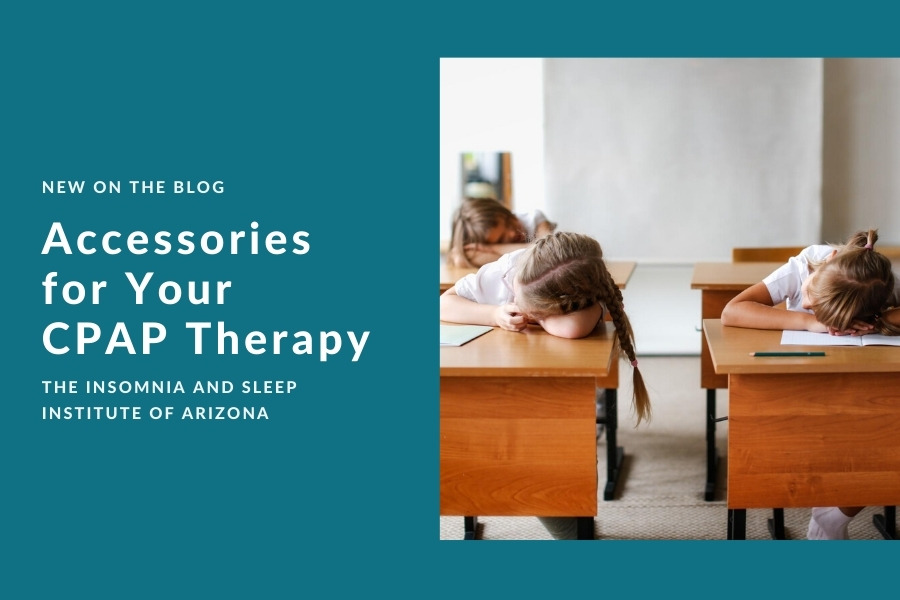CPAP therapy is the gold standard in treating obstructive sleep apnea (OSA). OSA is one of the most common reasons patients seek out The Insomnia and Sleep Institute of Arizona, the Face of Sleep Medicine in the state. Led by triple board-certified Dr. Ruchir P. Patel and featuring unparalleled staffing levels, we are proud to set the standard in sleep medicine throughout the region. As an outcome-driven clinic, it all starts with a correct diagnosis—and OSA is notoriously under- and mis-diagnosed. In many cases, this is because general physicians are not informed on the full set of symptoms of sleep disorders like OSA. However, at our clinic, no referral is needed to schedule a consultation and treatment.
Of course, CPAP adherence is critical to proper therapy. CPAP only works when it is routinely and properly used. Today, patients have many options when it comes to CPAP machines and accessories. Finding the right fit for you is essential. Recently, the makers of CPAP machines, SleepRes, introduced a new “comfort accessory” to help soften CPAP peak respiratory flow. The V-Com is a CPAP tool that the makers have dubbed “training wheels for CPAP.” When the peak respiratory flow of positive airway pressure (PAP) is softened, it can help newcomers to CPAP better adjust. V-Com is easily added between the mask and hose, and is designed to reduce respiratory pressure/flow for more comfort with little to no reduction in actual expiratory pressure (EPAP).
Why are Comfort Devices Needed?
If you have not had CPAP therapy before but suspect you might have OSA, this is a treatment that will take a little getting used to. In fact, most people who do not adhere to CPAP best practices struggle the most in the beginning. It is common for those with OSA to go undiagnosed for many years, and suddenly using tools that truly provide you with the airway flow you need is a big change. Making this transition more comfortable will make it easier to adhere to CPAP usage. CPAP can feel strange at first, but with proper adherence for a few weeks most CPAP patients say they can’t imagine being able to sleep without it.
V-Com is designed to be temporary. The makers explain that after a few weeks or months, and after the patient can “easily tolerate the peak flow and inspiratory pressure of CPAP therapy,” you can simply remove the device. Unsurprisingly, many of the employees of the company that created V-Com also have sleep apnea. It is one of the most common sleep disorders and millions of people struggle with it. The Regional Senior Vice-President of the company tried out a V-Com prototype before it was released and says, “the comfort was dramatic, especially at higher pressures.” The goal of V-Com is to maximize adherence, and so far it’s doing just that.
Treatment You Trust
V-Com and other comfort accessories can be used for new patients as well as those struggling with CPAP adherence. The training wheels analogy fits, with the makers explaining that not every child needs training wheels when learning to ride a bike, but many do. Unlike native devices that are inherently part of various CPAP technologies, V-Com is an add-on. The makers say that thus far, over 90 percent of new CPAP patients who have tried V-Com say they feel the difference and that the device will help them adjust to the technology faster. They report that just 15 seconds of V-Com is all that is needed to understand the difference.
Contrary to what many patients think, you can’t just turn the pressure down on CPAP to have the treatment be more comfortable. Doing this will lower the EPAP, which increases unwanted respiratory events. You also need to have any changes to pressure performed by your sleep doctor. V-Com is better for both sleep patients and doctors. It is easy to use, effective, and encourages adherence. It has even eliminated the need for chinstraps in many cases. If you have OSA, think you have OSA, are worried about CPAP adherence, or are struggling with it, comfort accessories are available. Contact The Insomnia and Sleep Institute for all your CPAP needs by calling the office, completing the online form, or starting a chat.





